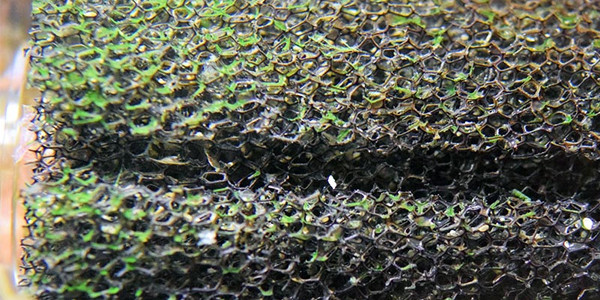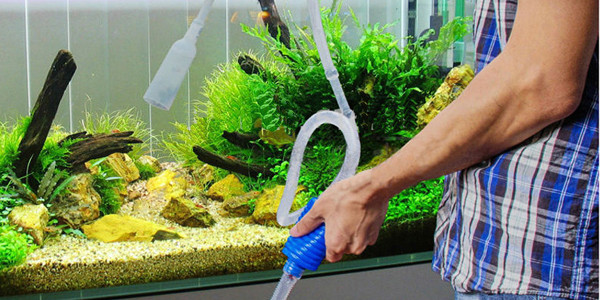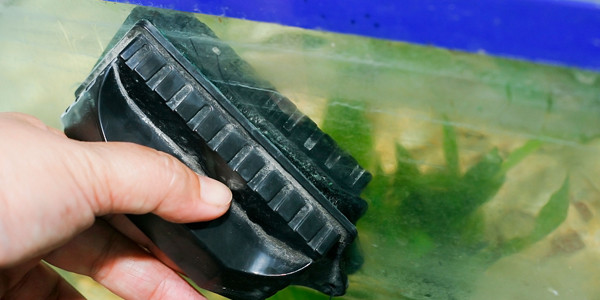Cleaning your aquarium is a simple but essential part of creating a healthy and thriving aquascape. There are several important aspects to consider when cleaning your aquarium.
Several best practices can help you to save time and effort in cleaning your tank when you clean the sand, glass, plants, and filters. Ultimately, you want to create and maintain a healthy and pristine environment to ensure that your fish thrives.
Your focus should be on cleaning the bottom of the tank and the water filter to ensure the water remains fresh and free of harmful substances that can become toxic to your fish, and these can also dirty your tank. Remember that your aquarium is a delicate ecosystem that includes healthy bacteria you don’t want to lose while cleaning your tank.
Let’s get started.
Table of Contents
Aquarium Cleaning tools to keep in mind
The use of bacteria, a siphon, and a glass cleaner are all essential tools you will require when cleaning your aquarium.
Using bacteria acts as a preventative measure in keeping your aquarium cleaner for longer.
Comparatively, a good hose and glass cleaner will make the process much simpler on your side when you’re doing the actual cleaning.
“Good Bacteria”

Bacteria are essential to a healthy thriving aquarium.
These bacteria will reduce the nitrate levels in your tank to a less harmful degree.
Nitrates come from fish feces, uneaten food, and other waste.
Using a healthy amount of good bacteria will naturally consume these nitrates and keep your tank cleaner for a longer amount of time.
Hose and Siphon

A hose and siphon system allow you to clean the substrate and gravel of your aquarium.
As all waste falls to the bottom of your aquarium, regular cleaning of the tank bottom with a hose and siphon is essential to maintaining a healthy ecosystem in your aquarium.
If waste from your fish and plant life remain in your aquarium for too long without cleaning, it is likely that your fish and plants will be negatively impacted. These tools will also provide a means to simultaneously remove old water.
However, a general rule is to remove only 40% of the old water. If you remove too much and then introduce new water to your system it is possible you can shock the fish and harm them inadvertently.
If you are serious about aquarium, a hose and siphon is a must have for cleaning purposes.
Glass Cleaner

Finally, the glass in your tank also acts as a magnet for dirty substances from your aquascape.
When cleaning your aquarium, using a glass cleaner will greatly improve the aesthetic of your aquarium and help sustain a cleaner aquarium in the long term.
Many people use a sponge to clean the glass of their aquariums, however, magnets and algae scrapers are also common tools for cleaning your aquarium.
Miscellaneous Tools
Apart from these tools, it’s also useful to have a large bucket and net you can use to displace your fish for a few moments while you are cleaning the aquarium.
Use the bucket as storage and put some of the old aquarium water into it; once you have enough water, input the fish into this container while you are cleaning.
This will help you avoid the common issue of damaging your fish unintentionally.
Why Clean Your Aquarium: The Tools to Use
A balanced aquatic ecosystem, which is what your aquarium should be, has a healthy balance of cleanliness and bacteria. This system can naturally feed the aquatic plants by processing the nitrates in the fish wastes and any rotting plant material. Toxic ammonia is then reduced, which ensures healthy fish and plants.
Help this process by maintaining the balance between waste products and what your tank’s ecosystem can handle. You will need a few essential tools to help clean your aquarium, such as a siphon, glass cleaner, and new material for the tank filters.
The healthy bacteria keep your aquarium cleaner and thriving for longer, so you can’t simply scrub your whole tank, not to mention how harmful this would be to your fish.
These are the tools to add to your cleaning kit for your aquarium:
Hose and Siphon for Cleaning Your Aquarium
A hose and siphon system allows you to clean the substrate and gravel of your aquarium. The hose and siphon draw decaying material out of the gravel or tank substrate, working like an aquatic vacuum cleaner.
Waste material such as excess food that’s rotten, fish fecal matter, scales and biological matter, and decaying plants can all collect at the bottom of your aquarium. These make a slimy tank bottom that becomes toxic with ammonia nitrates.
If waste from your fish and plant life remains in your aquarium for too long without cleaning, your fish and plants will likely develop diseases, sicken, and die.
Using your hose and siphon will also provide a means to remove old water and nitrate-dense wastes.
However, a general rule is to remove only 10-25% of the old water per cleaning or weekly. If you remove too much and then introduce new water to your system, it is possible you can shock the fish and cause serious harm.
If you are serious about keeping a clean aquarium, a hose and siphon is a must-have to maintain healthy fish and plants.
Aquarium Glass Cleaner
The glass sides in your tank can quickly become dirty and covered in algae and collect plant and animal wastes, clouding the water and becoming unsightly.
Since you can’t scrub the glass by hand without disturbing your fish (or having to remove your fish entirely), an aquarium glass cleaner is ideal for helping remove any buildup and dirt from your aquarium’s sides.
A magnetic glass cleaner is ideal as you can direct the cleaner from the outside while it wipes the sides for a thorough cleaning session.
Additional Tools and Equipment to Clean Aquariums
As much as possible, you should not upset or frighten your fish when cleaning your aquarium. The only reason to remove most or all aquarium water is if a disease has affected the water quality, which is a last-case treatment.
Additional tools to regularly clean your aquarium include:
- A large bucket to collect the new water
- A second large bucket to collect the dirty tank water
- A smaller bucket to scoop with
- A thermometer
- Fish net
- Filter material (sponges, charcoal, and biomaterial)
These tools will help make the cleaning routine easy and as stress-free as possible for your fish.
Also Read: 10 Best Electric Aquarium Gravel Cleaner
Step-By-Step Aquarium Cleaning
Clean your aquarium regularly, making it a routine to maintain healthy water and fish.
Below is a step-by-step overview of how to clean your aquarium efficiently and effectively.
Step-By-Step Aquarium Cleaning
Step 1: Unplug your aquarium equipment, such as heaters, filters, lights, or CO2 systems.
Step 2: Prepare your cleaning equipment, set up the siphon and hose, using a bucket to drain the dirty water in.
Step 3: Siphon the tank substrate using the hose’s end, filtering plant material and dirty water at the bottom of the tank. Ensure not to drain more than 25% of the water from the tank.
Step 4: Set the glass cleaner by attaching it to the inside and outside of the glass. Start scraping the sides of the tank in an even movement, removing any glass buildup without disturbing the fish.
Step 5: The siphon will draw up smaller gravel particles and sand that may still be useful to the aquarium. Sift these from the dirty water, clean them, and replace them when the tank has been cleaned sufficiently. Next, clean out the filter material, adding new bio sponges or filter substrate.
Step 6: Fill the extra bucket with fresh water. Use a water balancer to help remove any chemicals from tap water and replace essential microbes the water may lack. Leave the new water in the bucket until it reaches the same temperature as your aquarium’s water.
Step 7: Add the new water with the small bucket or scoop, adding incrementally at a rate of 10% fresh water every 20 minutes to avoid shocking your fish.
Step 8: Reinstall and connect your aquarium equipment.
These eight simple steps can be repeated for a number of aquarium types. Take care with aquariums that have water plants where aggressive siphon cleaning can cause root damage. Likewise, never siphon the substrate and aquatic plant forests during the spawning or laying season, as young fries and adolescent fish may get suctioned into the bucket and die.
The frequency of your tank’s required cleaning depends on the size and biological mass or composition of your tank. It is generally accepted that the more fish or plant life you have, the more waste there will be, which in turn requires more frequent cleaning and maintenance.
Keep track of when you last cleaned your tank and observe how long it takes for your water to show signs of becoming soiled, murky, silted, or green.
Based on these observations, you should be able to determine how often your tank needs to be cleaned.

5 thoughts on “The Aquarium Cleaning Guide”
I do not remove my fishes when I am cleaning my aquarium. It causes too much stress to my fishes!
i don’t remove the fish either. i carefully rub old sponge on the insides of the glass, trim out dead leaves and excess growth, replant and reposition plants and hardscape as necessary…
been keeping aquariums on and off since 2007, and i never use soap or other chemicals on anything i put inside the tank, especially the filter components – use some of the old water to gently rinse them out.
You shouldn’t be using soap to wash anything – you only use old aquarium water for any cleaning. Soap is harmful..
When I was a kid, I always wanted to have my own aquarium and that desire still hasn’t changed. I never knew that bacteria inside of tanks is crucial in helping the tank to last longer and stay clean. If I ever buy an aquarium, I will probably have to talk to an expert and get more information on how to maintain one.